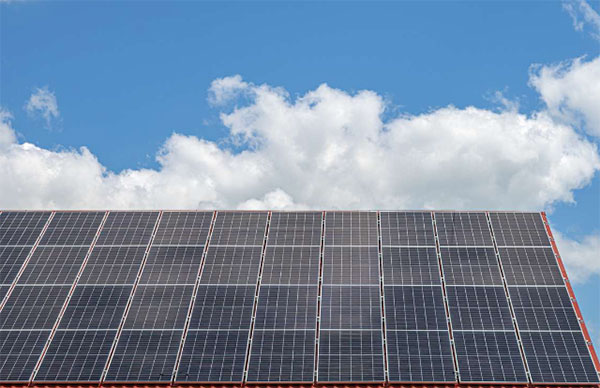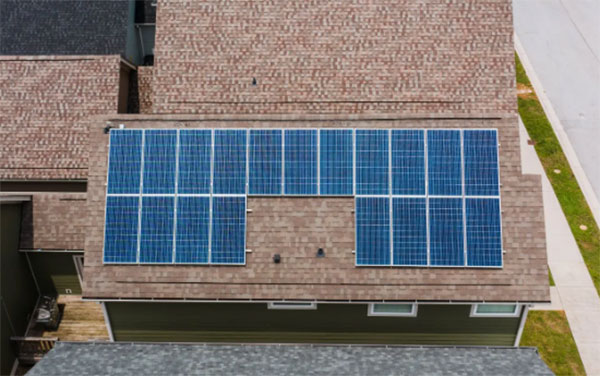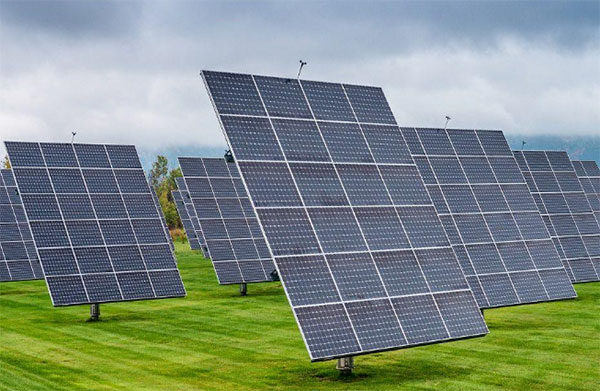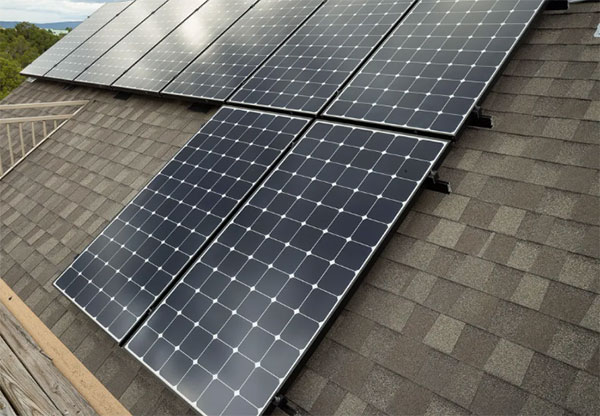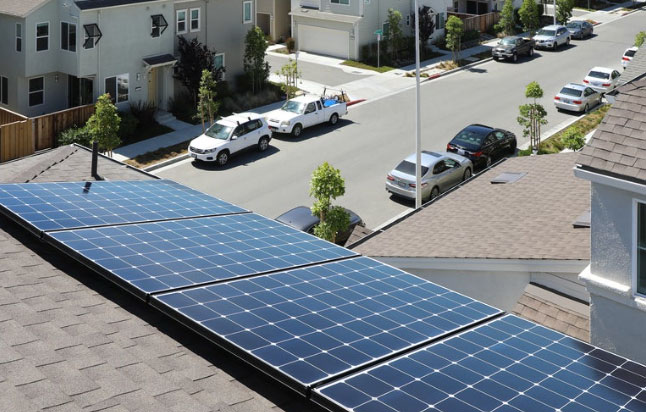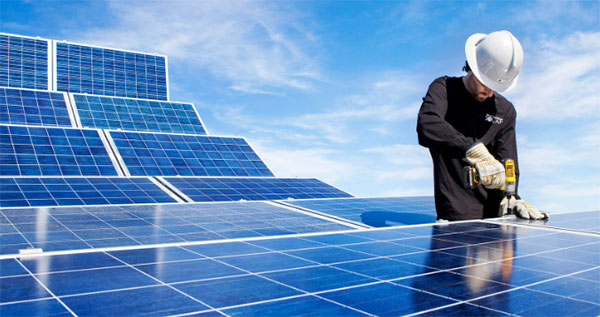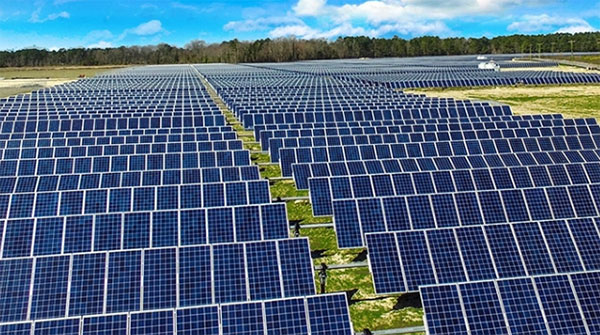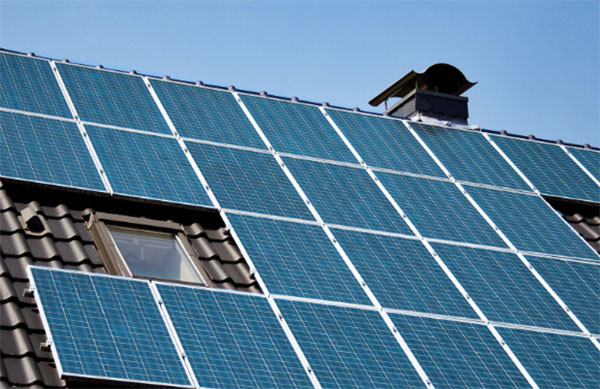Description
A 550W solar panel produces approximately 2.2 kWh daily, assuming 4 hours of peak sunlight and 80% system efficiency.Calculating kWh Production for a 550W Solar Panel
In order to calculate the amount of electricity (in kWh) a solar panel can produce, you can use the following formula:
Power Output (kWh) = Solar Panel Wattage (W) × Sunlight Hours Per Day (h) × System Efficiency (%)
Please note that system efficiency accounts for losses due to inverter efficiency, temperature and other system losses; and this factor is typically around 75% to 85% for most residential solar power system.
By way of an example, let's calculate the daily kWh production for just a single 550W solar panel located in an area receiving an average of 5 hours of full sunlight per day. We'll assume a system efficiency of about 80%.
Daily Power Output = 550W × 5h × 0.80 = 2,200Wh or 2.2 kWh
Monthly Power Output = 2.2kWh × 30 = 66kWh
Annual Power Output = 2.2kWh × 365 = 803kWh
The above calculations show you just how much energy can potentially be produced from a single solar panel (550W), and it clearly shows the importance of key factors such as sunlight hours, geographic location, and system efficiency.
Other Key Factors for Solar Panel Performance:
Efficiency - The efficiency of solar panels is critical to maximizing power output. Present day efficiencies for solar panels can range from 15% to 22%.
Cost/ Budget - The price of solar panels can vary significantly - with price differences arising from brand, materials, and efficiency. You can expect to pay anywhere from $200 to $500 for a 550W panel.
Quality of Materials - The durability and lifespan of solar panels is directly related to the quality of the materials used. High quality silicon cells will guarantee your solar panels will last for a minimum of 25 years.
Size/ Specifications - The size of 550W panels will also limit your options for installation. The dimension of modern solar panels can be as great as 1.6m by 1m for residential panels, and larger for commercial applications.
Impact of Geographic Location on Solar Panel Output
Solar Insolation and Its Role
Solar insolation refers to the amount of solar radiation energy received on a given surface area during a specific time. It is measured in kilowatt-hours per square meter per day (kWh/m²/day). The solar insolation levels directly influence the output of solar panels: higher insolation values mean more energy production. Solar panel efficiency also plays a crucial role; the more efficient a panel is, the better it can convert solar radiation into electricity, regardless of the location. Factors affecting solar insolation include geographical location, season, and local weather conditions. Areas closer to the equator typically receive higher solar insolation due to the more direct angle of sunlight throughout the year. Conversely, regions further from the equator experience lower solar insolation, especially during the winter months when the sun is lower in the sky.Comparing Output in Different Regions
To demonstrate the impact of geographic location on solar panel output, we can compare the estimated annual energy production of a 550W solar panel in various regions around the world. The following table assumes an average system efficiency of 80% and uses local average solar insolation data.| Region | Average Solar Insolation (kWh/m²/day) | Estimated Annual Output (kWh) |
|---|---|---|
| Cairo, Egypt | 5.95 | 1932 |
| Berlin, Germany | 3.03 | 989 |
| Mexico City, Mexico | 5.38 | 1754 |
| Sydney, Australia | 5.16 | 1682 |
| Toronto, Canada | 3.58 | 1167 |
| Tokyo, Japan | 4.25 | 1385 |
- Cost and Budget: Initial installation costs and potential savings vary by region due to differences in sunlight availability and government incentives.
- Efficiency Requirements: In regions with lower solar insolation, selecting high-efficiency solar panels becomes even more important to maximize output.
- Lifespan and Durability: Solar panels in regions with harsh weather conditions need to be robust. Panels are typically warrantied for 25 to 30 years, but their actual lifespan can be influenced by local conditions.
- Material Quality: High-quality materials can improve the resilience of solar panels against environmental factors, ensuring consistent performance over their lifespan.
Optimizing 550W Solar Panel Performance
Maximizing the efficiency and output of your 550W solar panel involves careful consideration of positioning, angle, and regular maintenance. These factors play pivotal roles in ensuring you get the most electricity generation from your solar power system.Positioning and Angle for Maximum Efficiency
Optimal Positioning: The geographic orientation of solar panels is crucial for maximizing energy production. In the northern hemisphere, panels should face south, and in the southern hemisphere, they should face north. This positioning takes advantage of the sun's path to ensure maximum sunlight exposure. Ideal Angle: The tilt angle of your solar panels can significantly affect their efficiency. The optimal angle varies depending on your latitude:- Low Latitudes (0° to 30°): The ideal tilt is equal to the latitude minus 15° in summer, latitude during spring/fall, and latitude plus 15° in winter.
- Mid Latitudes (30° to 50°): The optimal tilt angle is the latitude minus 10° in summer, latitude in spring/fall, and latitude plus 20° in winter.
- High Latitudes (Above 50°): Here, the tilt should be latitude minus 5° in summer, latitude in spring/fall, and latitude plus 30° in winter.
Maintenance Tips to Sustain Output Levels
Regular Cleaning: Dust, dirt, and other debris can reduce solar panel efficiency by blocking sunlight. Cleaning panels every 6-12 months can increase their output by as much as 5-10%. Use a soft brush or cloth and if necessary, mild soapy water to clean the panels. Inspect for Damage: Regularly inspect your solar panels for any damage, such as cracks or discoloration, which can affect performance. Early detection can prevent further deterioration and costly repairs. Monitor Performance: Installing a monitoring system can help track the performance of your solar panels, alerting you to any issues or inefficiencies. This technology allows for real-time tracking of energy production and system health. Professional Maintenance: Annual check-ups by a professional can ensure your system is operating at peak efficiency. They can perform more thorough inspections and maintenance tasks, such as checking electrical connections and ensuring inverters are functioning correctly. Shade Management: Over time, new constructions or tree growth can cast shadows on your panels, significantly reducing their output. Regularly assess the shading of your panels and trim any foliage to minimize shadowing.Real-World Applications of 550W Solar Panels
The versatility and high power output of 550W solar panels make them an excellent choice for a wide range of applications, from residential setups to large-scale commercial and industrial installations. Understanding the specific benefits and considerations for each application can help in making informed decisions about solar energy investments.Residential Use Cases
Energy Independence and Cost Savings: For homeowners, 550W solar panels can significantly reduce electricity bills, with the potential to save thousands over the lifetime of the system. A typical home installation might include 10-20 panels, providing substantial power for daily needs. Installation Flexibility: Due to their higher power output, fewer 550W panels are needed to achieve the same energy production as more numerous lower-wattage panels. This efficiency is particularly advantageous for homes with limited roof space. Sustainability: Residential solar installations contribute to a reduction in carbon footprint, aligning with growing environmental awareness and the push for green living. Considerations:- Cost: The upfront cost for a residential solar system can range from $10,000 to $20,000, depending on system size and installation complexities. However, tax incentives and rebates can significantly offset these costs.
- Efficiency: The efficiency of solar panels, typically ranging from 15% to 22%, is a crucial factor in maximizing residential energy production.
- Lifespan: With a lifespan of 25-30 years, 550W solar panels are a long-term investment that can increase a property's value.
Commercial and Industrial Applications
Large Scale Energy Needs: Commercial and industrial settings, such as manufacturing plants, warehouses, and large offices, can have extensive energy requirements. A solar installation with 550W panels efficiently meets these demands, offering a renewable energy solution that can significantly reduce operational costs. Reliability and Sustainability: Businesses are increasingly adopting green practices, not only to reduce energy costs but also to enhance their reputation among environmentally conscious consumers. Solar energy is a reliable source that supports corporate sustainability goals. Grid Independence: For industries in remote locations, relying on the grid can be expensive or impractical. Solar power provides an alternative, ensuring uninterrupted operations. Considerations: Initial Investment: The cost for commercial solar systems can vary widely, typically starting from $50,000 and going up to several million dollars for vast installations. The return on investment, however, is often realized within a few years through energy savings and possible tax benefits. Maintenance: While solar panels require minimal maintenance, large installations can incur higher costs for cleaning and routine checks to ensure optimal performance. Space Requirements: Commercial installations may require a significant amount of space, either on rooftops or ground-mounted systems. Planning must account for current and future space availability.Monitoring and Managing Solar Panel Output
Solar panel output monitoring and management are critical to optimizing energy production and supporting the long-term success of a solar energy system. With emerging technology, there are a variety of tools and methods to manage and analyze solar panel performance.Tools for Tracking Solar Energy Production
Smart Inverters
Modern inverters not only convert DC power from solar panels to AC power, which is what your home and utilities use, but also offer advanced monitoring capability. They can track your energy production minute-by-minute, allowing you to see how well your system is performing instantly. Learn more about inverters.Solar Monitoring Systems
These dedicated systems connect to your solar panel array to provide detailed feedback on energy production, consumption, and system health. They can offer several useful features, such as:- Real-time production data via a web-connected device 24-7
- Comparison to see how production varies from day to day or year to year
- Automatic alerts when your system detects any inefficiency or potential problem
Mobile Apps and Online Dashboards
Many solar monitoring systems offer mobile apps and online portals. These let you to keep a close eye on your panels, even when you’re away from home. They usually show:- Daily, monthly and yearly energy production
- Your system’s environmental impact
- Your financial savings from solar

